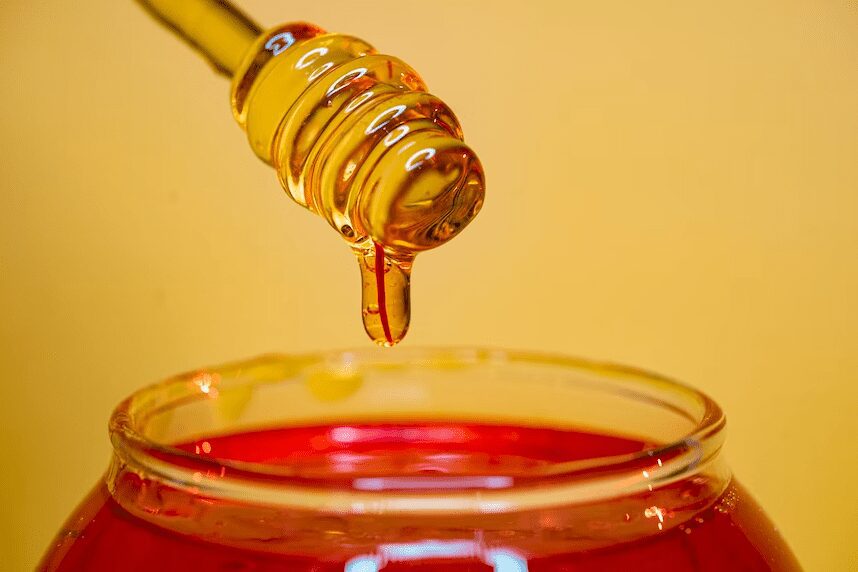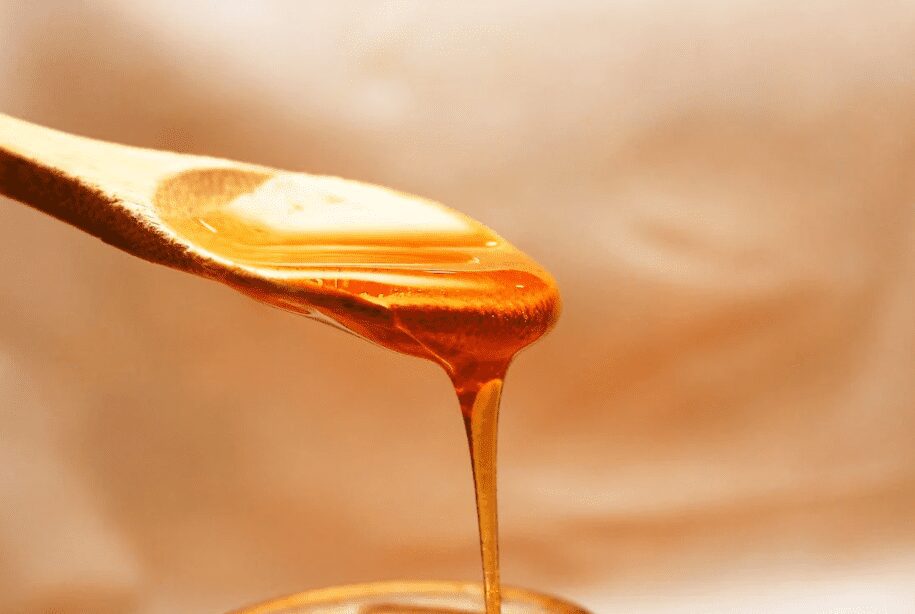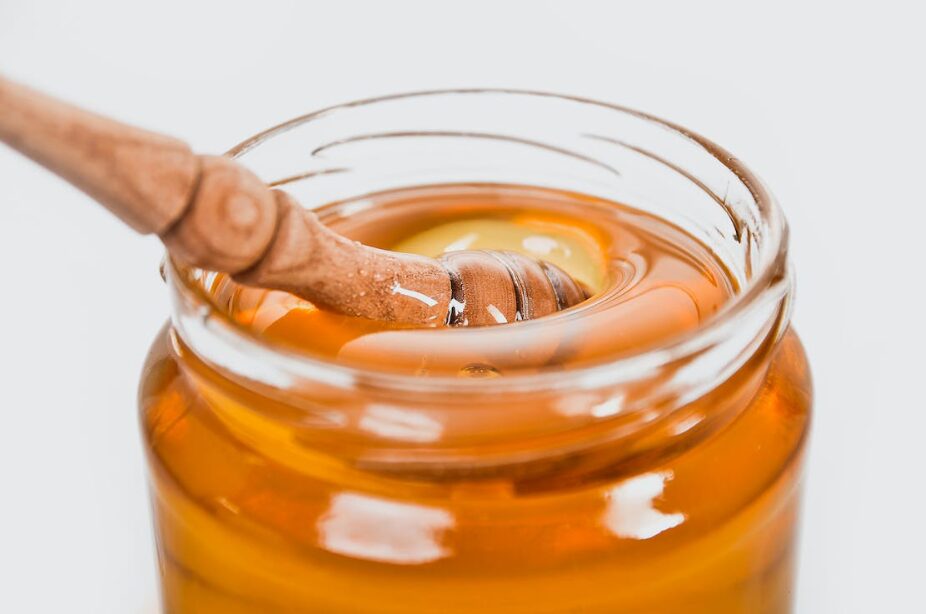Honey is a versatile and natural sweetener that can be used in many different ways. It has been used for centuries as a remedy for coughs and sore throats, and it can also be used as a sugar substitute in baking recipes.
Crystallization is a natural process that occurs when raw honey is stored at temperatures below 35°C. This happens because the different natural sugars present in honey form granular structures, which can become solid over time.
The rate of crystallization depends on factors such as storage conditions and the variety of honey used. For example, some types of honey are more prone to crystallizing than others.
Fortunately, crystallized honey can still be used without any problems. It will soften and dissolve when added to hot tea or other warm liquids, so it can still be enjoyed as usual.
There are some methods to de-crystallize your honey. Here’s a step by step guide for you!
Can You Microwave Honey

The short answer is YES! When preparing quick meal dishes, microwaving honey to de-crystallize it can be time-saving. Crystallized honey can liquefy when heated but use caution.
The quality of the honey could change and the advantages of raw honey could be lost if you overheat it during the decrystallization process. The following procedure will require a little caution and some extra advice to learn how to microwave honey safely.
How To Microwave Honey
Fill a dish that can go in the microwave with the honey first. The experts advise using a glass dish or container to prevent plastic from leaking into the honey and altering its consistency. No plastic honey jars should be microwaved.
Microwave your honey for 30-second intervals at 50% power. Between each interval, stir the honey to ensure consistent heating. To make sure your honey is not scorching in the microwave, give it a quick whiff each time. If honey gets too hot and burns, it will have a burnt fragrance.
Compared to raw, unfiltered honey, which is extremely delicate, typical honey is much more forgiving and comes in plastic bottles styled like bears. To maintain raw honey tasting as good and smooth as possible, extra care must be taken.
When the honey has reached the desired warmth and is as runny as you like, it is ready to be served. After being microwaved, honey may slowly solidify or crystallize once more. This is expected and completely typical. Simply reheat using the aforementioned directions to reverse the procedure.
Other Method To De-crystallize Honey
You must carefully melt the raw honey in a glass jar over low, indirect, and steady heat for however long it takes the honey to de-crystallize in order to maintain the greatest properties of the raw honey.
1) Put the glass honey jar inside a bigger glass or ceramic bowl.
2) A pot of water should be heated to a temperature of 95° to 110°F. This warm water bath can be made with a kettle, an instant pot, or, for accuracy, sous vide cooker.
3) The bowl that the honey jar is sitting in should now be filled with warm water. Make sure the water line is below the lid and above the honey level. You don’t want your honey container or jar to unintentionally include water.
4) While intermittently stirring, leave the honey jar in the bath until it reliquifies. Using a thermometer, check the water temperature and make adjustments as necessary to maintain it at or below 110°F.
5) The quantity you are liquefying will determine how long it takes for your honey to de-crystallize, but it usually takes a standard honey jar around an hour.
Raw Honey Is Overheated

You have several reasons to exercise additional caution when de-crystallizing your honey, whether you purchase raw local honey for the pollen advantages or if you are a foodie with a taste for the world’s most delectable raw honey.
At temperatures above 110°F, pollen, propolis, antioxidants, and enzymes present in raw honey are destroyed. Honey loses quality when heated beyond 140°F, and sugars caramelize at temperatures above 160°F. What’s in your honey jar after it’s been caramelized may be tasty, but it’s no longer actual honey.
Water has a boiling point of 212°F. You can’t simply submerge the jar in boiling water to preserve your raw honey while de-crystallizing it. Even tap water will need to be regularly monitored with a thermometer if you are using it to de-crystallize honey because the majority of hot water heaters at home are set at 140°F.
Is Honey Safe To Microwave?
When you find the ideal heating temperature to preserve the antibacterial activity, microwaving honey is safe. It is ideal to select microwaveable bowls with characteristics that help evenly disperse heat and are heat-resistant.
There are microwave-safe bowls available for reheating honey that can withstand the microwave’s thermal shock. However, you can also reheat honey in a glass jar in the microwave by taking the cover off before doing so.
Additionally, because it protects the remaining honey from repeated microwave thermal heating, drawing off a piece of honey that has crystallized and melting it in the microwave is the safest method.
Can I Microwave Honey In A Plastic Container?
It is not recommended to microwave honey in a plastic container as it can warp at the high temperatures of the microwave. Instead, use a microwave-safe glass jar for heating honey.
If the honey inside the plastic container is hard enough to be scooped out, you can use the hot water bath method to soften it. This involves placing the container in a bowl of hot water and letting it sit until it softens.
Do All Honey Types Crystallize?

Crystallization is a natural process that all types of honey will go through, regardless of the variety. From classic clover to decadent manuka, all honey will crystallize over time. In fact, this process is actually a sign that the honey is high-quality, natural, and unprocessed.
Heavily processed honey, like pasteurized honey, won’t crystallize as quickly due to the processing which may remove some of the nutrition. Artificial honey, laced with additives like corn syrup, won’t crystallize either—but they aren’t as rich tasting as natural honey and don’t share its potential health benefits.
The rate at which different types of honey crystallize can vary depending on their composition and other factors such as temperature and humidity. Generally speaking, lighter-colored honey tends to crystallize faster than darker varieties.
Crystallized honey can still be used in recipes or enjoyed on toast or crackers; it just needs to be heated gently until it liquefies again before use. If you want to prevent your honey from crystallizing too quickly, store it in an airtight container at room temperature away from direct sunlight or heat sources.
How To Avoid Honey Crystallization
Honey is a natural sweetener that has been enjoyed for centuries, but it can be frustrating when it crystallizes. Fortunately, there are some steps you can take to help slow down the process and keep your honey from becoming too thick and grainy.
First, store honey at room temperature. Cooler temperatures actually speed up crystallization, so avoid storing it in the fridge. Keeping honey in a glass container or jar will also help, as glass does a better job of deflecting moisture than plastic.
Additionally, always store honey tightly covered and away from light. This helps to prevent any additional moisture from entering the container and speeding up the crystallization process.
The best way to keep honey from crystallizing is to use it regularly and replace it often with fresh batches. This ensures that you’re always using the freshest product possible and reduces the chances of your honey becoming too thick or grainy over time. With these simple tips in mind, you’ll be able to enjoy your favorite sweetener.
FAQs
Is honey harmful when heated?
Extreme heating used to de-crystallize honey can cause enzyme denaturation and a reduction in the activity of its nutrients. If ingested in an overheated form, it also has negative consequences. So make sure to microwave the honey at a controlled temperature no higher than 35 to 40 degrees Celsius.
Is it okay to consume crystallized honey?
Yes, honey that has been crystallized retains its flavor and texture for a longer period of time. Its crystallization indicates that it is unprocessed and healthy. Due to its non-dripping granular shape, it is therefore chosen to be used as a topping on various food preparations.
Should honey be kept in the fridge?
Use an airtight container and store honey below 35°C in a colder environment. In most cases, honey that has crystallized will become harder and take longer to soften when refrigerated. However, unless you need to protect it from sunshine or a warm environment, avoid refrigerating it.
Conclusion
In conclusion, de-crystallizing honey is a simple process that can be done in the microwave or with a bowl of warm water. Before microwaving, it is important to remove the lid from the jar and set up the microwave at an optimum power limit and heating temperature. It is also important to take intervals of a few seconds and stir the honey to heat it evenly before taking it out with hot pads. This gentler method of using warm water takes longer but keeps the honey de-crystallized for a longer period and avoids overheating. Alternatively, enjoying honey in its crystallized form is also an option.

